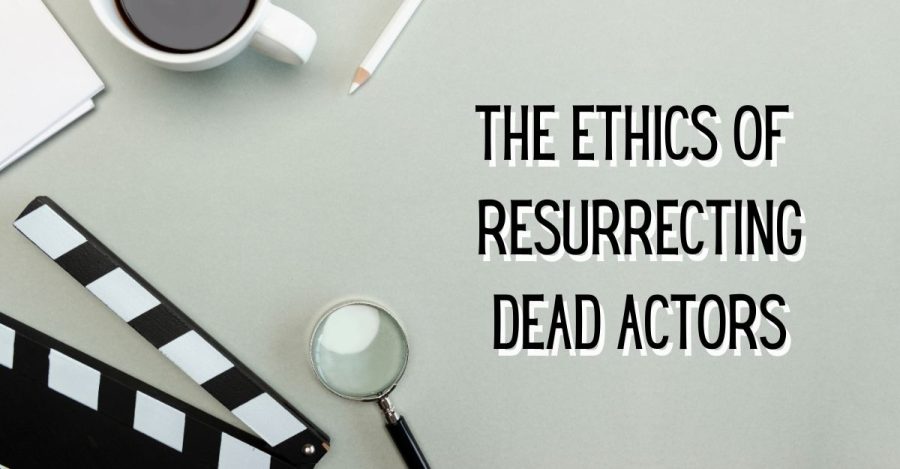The ethics of resurrecting dead actors
In this era of computer graphics, Should actors be digitally recreated? If so, why?
Recently, the new slate of DC comic movies was announced. Included in that announcement was that “The Flash” movie would still be released. In this movie, The Flash will come across heroes whose actors are dead, such as Christopher Reeve’s Superman. So, what is this technology, and how does it work?
Deepfakes, put simply, are digital renditions of actors’ faces and sometimes whole bodies. These deepfakes have been utilized in various movies, most recognizably in “Star Wars” and its associated properties as well as other films. However, this technology could be used in ways that some might disagree with.
Some examples of this technology have been used in “Rogue One: A Star Wars Story,” and was created by crafting a fully computer-generated imaging, or CGI, rendering of Peter Cushing for the film. This was a fairly good idea, mostly, because he isn’t seen in full nor has a lot of screen time. A young Princess Leia is also featured in this movie, although her render falls into the uncanny valley more than Cushing’s.
However, the main issue of this conversation is the ethics of digitally recreating these actors for movies. Or, perhaps replacing actors entirely with fully automated CGI models of real people. Although, there isn’t anything that can be done to replace humans in the process of making a movie, there will always be a human somewhere involved in the process.
Now comes the question of whether or not CGI should be used to mimic the likenesses of deceased actors and actresses. I believe that unless it is necessary for the narrative, the actor need not be present. The above examples for the “Star Wars” franchise in a way required these characters and their respective actors. But, in cases like the new “Flash” movie, Christopher Reeve being digitally resurrected is unnecessary and unneeded for the story of the movie. In cases of movies being completed after an actor’s death, time should be taken in the wake of their death to consider whether or not their appearance in the movie would be in poor taste.
This happened with Bruce Lee in his movie “Game of Death” and his son Brandon Lee in “The Crow,” who died while filming their respective movies. And so, previous takes and CGI were used to complete these movies. In both of these cases, they were passion projects for the Lees. So, I believe that this was warranted and needed for the movie to be completed.
These kinds of stories rely on the nostalgia of the audience to see these digital cameos. If the audience doesn’t react to these digital cameos, then the cameos could possibly be seen as being in bad faith, even with the permission of the estates. For example, Harold Ramis appeared in the movie, “Ghostbusters: Afterlife,” as a digital recreation. But, someone could view this cameo as purposeful manipulation of the audience because of how he is shown and portrayed in the movie. Also, these cameos can break the illusion as well. In “Rogue One” Cushing’s character was used sparingly and only seen in dim lighting so you couldn’t tell how it looked. But, Cushing’s character was used to push the story forward and was needed. Some of these cameos seem like the movie is pandering to audience nostalgia.
In total, I believe that an actor should only be digitally resurrected for a movie if it is a project that the actor was or would be passionate about as well as whether or not the actor’s likeness being used would be in poor taste. But, if it fits the criteria, then go for it.





